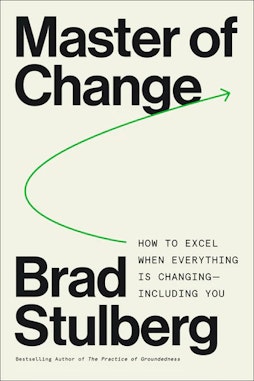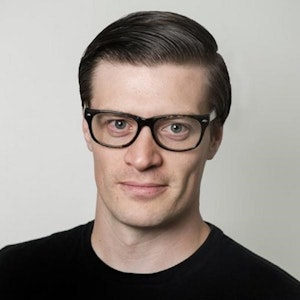Mastering the changing workplace: what we need to accept
Brad Stulberg’s new book Master of Change offers fresh wisdom for workplace leaders. Its key message: first we need to study and understand the concept of change itself
Back in that strange spring of 2020, as nearly every citizen on the globe was groping their way through the early days of the pandemic, a common question could be heard murmuring from many different quarters: When was life going to go back to normal?
Author Brad Stulberg had a realisation that turned out to be prescient. Many things, Stulberg guessed, were never ‘going back’. Instead, a series of long-term changes were rapidly and simultaneously being triggered across society.
If you could take the last four years of workplace design and boil it down to just one word, that word might be ‘change’. Yet, although we nod along with the beautiful and unassailable truth that change is the only constant, few of us have really taken a step back and studied the concept of change itself.
Brad Stalberg is one of those people, and luckily for us he put his discoveries into a short, concise, and actionable book called Master of Change. Anyone who is mixed up in the future of the workplace should read this book.

Disordering events
When it comes to understanding change, language can be deceptive, and pinning down a few key terms is valuable. ‘Change’ comes about when any kind of system encounters a significant ‘disordering event’. For example, a normal human goes through a chain of disordering events in their lives: moving away home, getting married, having kids, changing careers, enduring the death of a parent, and so on.
When asked, most adults think the number of these disordering events in their own life is less than ten. In reality, the average number of significant disordering events for adults today is 36, or one every 18 months of adulthood.
If Stulberg’s first key discovery is that change happens far more frequently than we think, his second important point is that, scientifically, not all change is the same. Homeostasis is a term used to describe temporary change. The human body operates at 98.6 degrees. Then a disruption event in the form of a fever comes along and the body temperature goes up to 102. Eventually the illness passes and your body regulates back to 98.6.
Stulberg points out this is how the human mind defaults to thinking about change. A to B, then back to A. The problem is that homeostasis represents only about 5 per cent of change in response to a significant disorder event.
‘Order is interrupted by a disorder, leading to a reorder’
The much more apt term is allostasis. Here, the reaction to a disorder is to achieve a new order. Let’s take, for example, an ecosystem that is operating at an equilibrium when an invasive species is introduced. In the case where the invader cannot be removed, the ecosystem must accommodate it, and thus achieves a ‘new normal’. Order is interrupted by a disorder, leading to a reorder. A to B to C.
What we have collectively witnessed over the past few years of workplace design is executive teams hunkered down, waiting for the fever to pass, so that we can ‘go back’ (A). Workers have dug their heels in and fought to continue hybrid policies from the pandemic designed to make their lives as convenient as possible (B).
What has yet to be defined is what the reordering condition of the workplace will be (C). For those of us that shape the workplace, this presents the greatest opportunity for evolution in our lifetimes. We’re at the very dawn of defining the future. What recommendations does Stalberg offer us on how to proceed?
Recommendations on change
The good news is that Master of Change offers several recommendations. The bad news is that these recommendations take courage, patience, self-examination and significant investment. It is not as easy as following a fashionable set of industry trends.
First and foremost, Stulberg councils that change, more specifically allostatic change, is perpetual. Start by adopting a change mindset. The term Stulberg coins is ‘rugged flexibility’. This is both an attitude and a set of actions that favour early plasticity and later rigidity. Assume the disruptions are going to keep coming and remain responsive.
The second major recommendation is that rolling with change is easier if you clarify your core values. Many companies have already invested the time and energy to clarify their mission statements and select signature values. Stulberg suggests these be fixed as a company’s compass that should guide decision-making in unsure times.
A final takeaway is perhaps the most stunning, refreshing and poignant reference Stulberg presents: the Loevinger Model of ego development. Here, the ego is not a thing but a process, achieving higher and higher states. The adolescent ego (or workplace) is self-protective and conformist, before evolving to being self-aware and individualistic.
This alone would perhaps be a neat and encouraging diagram of the past and present workplace, but Loevinger goes on…the rigorously refined ego moves to the higher plateaus of acceptance (even celebration) of idiosyncrasies and makes peace with inner conflicts though broad empathy.
‘How can the workplace become the customised instrument that will help a team thrive?’
This vision is Stulberg’s great gift to us as designers. Imagine a workplace that is based on a deeply researched understanding of the people we serve, not as a faceless mass but as an actual group of individuals that are working together to fulfil the mission of their specific, special company. How then can the workplace conform to their unique needs, rise to this moment, and become the customised instrument that will help that team thrive?
The next chapter of workplace design has the promise to be most exciting moment of any of our careers. Stulberg offers an important piece of work that can help us, individually and collectively, master the changing workplace.
Master of Change: How to Excel When Everything Is Changing – Including You by Brad Stulberg is published by Harper Collins (2023).

David Dewayne. Image: courtesy of cmpbs








